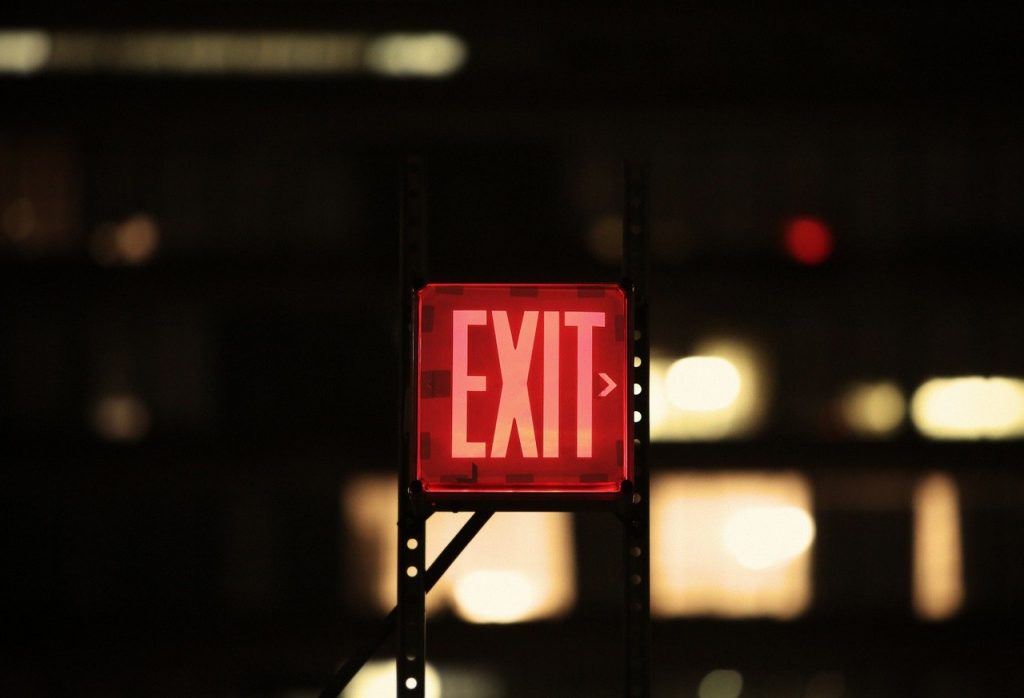Emergency lighting systems, exit signage, and emergency exit doors are considered to be the most important of all safety features and devices utilized in today’s businesses. Others include fire alarm units, water sprinkler units, and security systems.
While all are necessary, your emergency lighting systems are those that will serve as guides to your employees and customers during the event that an emergency occurs. These systems are designed to save lives. As an owner or operator of a business, it is imperative that you have regular inspections performed on your emergency lighting systems.

Power Sources of Lights and Exit Signs for Emergencies
Both emergency lighting units and exit signs are similar in nature, in terms of method of operation and setup. Exit signs typically remain in operation around the clock. They use two different sets of bulbs.
The first operates on the electricity of the building. The second set turns on during power failure within the building. These bulbs operate through a battery and are low-voltage.
Emergency lighting systems typically only turn on during a power interruption and are operated on either a battery or a generator system. In some instances, exit signs may receive their power from a generator.
Illumination Requirements
All businesses should have emergency lighting systems and exit signs throughout their establishment. Many businesses do not realize it, but there are illumination standards associated with these emergency systems. These are put into place by the National Fire Protection Association (NFPA). The standards are outlined under the 101 Life Safety Code.
Generally, these are designated per area of operation of the business. For information on illumination requirements for the area where your business is located refer to the NFPA standards and/or contact your local building and zoning office to discuss commercial emergency lighting requirements.
Regular Inspections and Testing Required by Law
If you own and/or operate a business, you are required by law to have your emergency lighting system and exit signs regularly inspected and tested. Not only do these inspections and tests help you avoid serious liabilities and fines, they help in saving lives during emergencies.
The following outlines some of the many regulations on inspecting and testing your emergency lighting systems and exit signs in your place of business:
- OSHA requires that there is adequate and highly reliable lighting for all exits within a business.
- OSHS states that businesses must ensure proper maintenance of their emergency lighting systems and exit signs so that the systems continue to operate properly at all times.
- The National Electric Code specifies that specific illumination be placed throughout the building and that it meets functional standards at all times, including battery power backup in the event of an emergency.
- The International Fire Code requires that proper illumination be required by the means of egress and that the lighting systems run a total of 60 minutes or longer in the event of an emergency.
- The Life Safety Code requires monthly testing of emergency and exit lighting systems. It also requires a yearly test of all of the exit and emergency lighting systems within a business.
What Does “Means of Egress” Mean?
Means of egress means that there is a path designed for individuals to leave the building that is obstructed. The components of a means of egress include exit access, an area designated as being an “exit”, and an exit discharge area for the building, space, and structure involved.
In relation to the International Fire Code specification mentioned previously, this means that the exits of your business should be properly illuminated at all times, whether there is power or there has been an interruption of power.

How Can Business Owners Test Emergency Lighting and Exit Systems?
If you evaluate your emergency lights and exit lights, you will likely find that they each have a button, along with instructions to push in order to test. In most instances, you will push this button for a set period of time – usually 30 seconds. This will then run a diagnostic test for the bulbs and any battery associated with the unit.
If you find that the bulbs are not working or that they are dull, it indicates that either the bulbs or the battery pack should be replaced. You may contact a commercial electrician to handle these tasks.
To properly test the in-house exit lights, simply turn off the breaker for the signs in your main power panel. You should then turn it off. Now, you should go around to each of the exit signs in your building to determine if the signs are working properly.
If you are unsure of the breaker’s location, you may contact a commercial electrician for assistance. In some cases, other devices in your business – such as computer systems – may be connected to the same breaker. If so, ensure you save your work and turn the devices off prior to turning off the breaker so that you do not experience complications.
How Long Should the Test Be Ran?
If you are running your own emergency light and exit signs test, you should run the test for at least half a minute. This is because if you have a battery that is defective, initially, the lights may be bright and appear to be working; however, after a small amount of time, the bulbs will lose power.
By running for about half a minute, you can be certain that the bulbs are not simply operating on a surface charge with a defective battery. If the lights turn off after this time, the battery will need to be replaced to ensure that all of the emergency lights come on when you truly need them.
Contact Us Today
We here at Hardcore Electric are capable of testing, maintaining, and repairing emergency light systems and exit signs in your business. We also handle a wide array of other commercial electric services. We are trained, licensed, and insured. Contact us today to have us test and inspect your emergency lighting systems, exit signs, breakers, equipment, and more.
